Chase Bank

Chase Bank

Trade name | Chase Bank |
|---|---|
Type | Subsidiary |
| Industry | Banking |
| Predecessor | The Manhattan Company |
| Founded | 1877 December 1, 2000 (2000-12-01) |
| Headquarters | 270 Park Avenue, Manhattan, New York City, New York , |
Key people | Jamie Dimon (CEO) |
| Products | Financial services |
| Services | Retail Financial Services Card Services Commercial Banking |
| Revenue | US$109.029 billion[1] (2018) |
Net income | US$32.474 billion[1] (2018) |
| Total assets | US$2.623 trillion[1] (2018) |
Number of employees | 189,315 (2016) |
| Parent | JPMorgan Chase |
| Website | www.chase.com [56] |
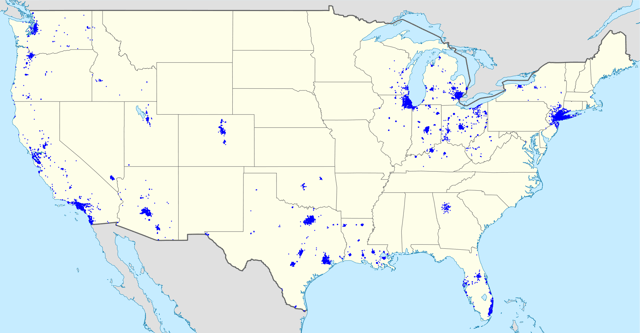
Chase branches in the U.S. in 2010
J.P. Morgan Chase Bank, N.A., doing business as Chase Bank, is a national bank headquartered in Manhattan, New York City, that constitutes the consumer and commercial banking subsidiary of the U.S. multinational banking and financial services holding company, JPMorgan Chase. The bank was known as Chase Manhattan Bank until it merged with J.P. Morgan & Co. in 2000.[2] Chase Manhattan Bank was formed by the merger of the Chase National Bank and The Manhattan Company in 1955.[3] The bank merged with Bank One Corporation in 2004[4] and later acquired the deposits and most assets of The Washington Mutual.
Chase offers more than 5,100 branches and 16,000 ATMs nationwide. JPMorgan Chase & Co. has 250,355 employees (as of 2016) and operates in more than 100 countries. JPMorgan Chase & Co. had their assets of $2.49 trillion in 2016.
Trade name | Chase Bank |
|---|---|
Type | Subsidiary |
| Industry | Banking |
| Predecessor | The Manhattan Company |
| Founded | 1877 December 1, 2000 (2000-12-01) |
| Headquarters | 270 Park Avenue, Manhattan, New York City, New York , |
Key people | Jamie Dimon (CEO) |
| Products | Financial services |
| Services | Retail Financial Services Card Services Commercial Banking |
| Revenue | US$109.029 billion[1] (2018) |
Net income | US$32.474 billion[1] (2018) |
| Total assets | US$2.623 trillion[1] (2018) |
Number of employees | 189,315 (2016) |
| Parent | JPMorgan Chase |
| Website | www.chase.com [56] |
History
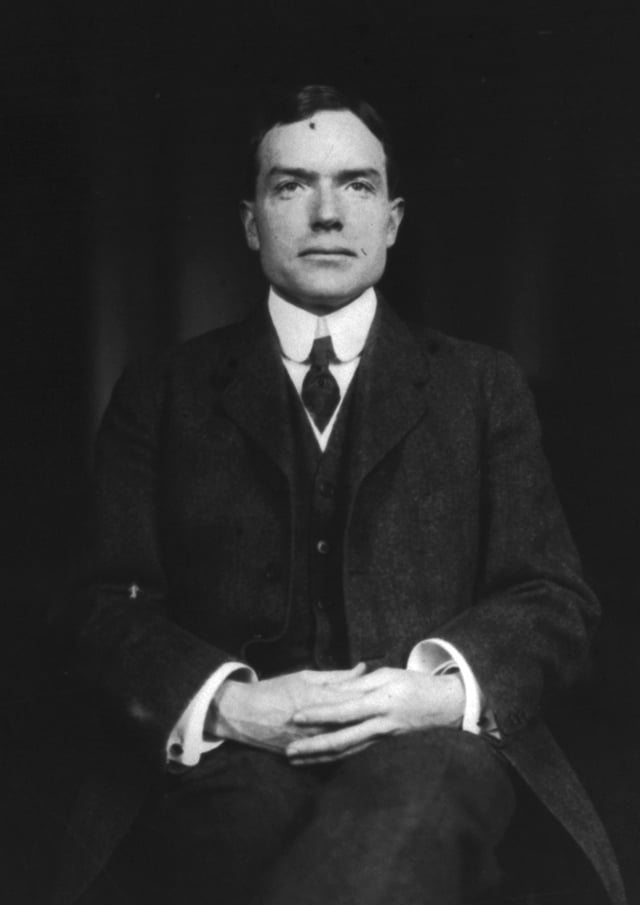
John D. Rockefeller, Jr. and the Rockefeller family were the largest shareholders of Chase National Bank.
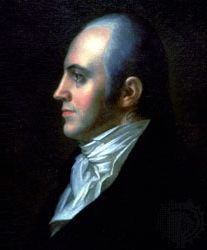
Aaron Burr, 3rd Vice President of the United States and founder of The Manhattan Company.
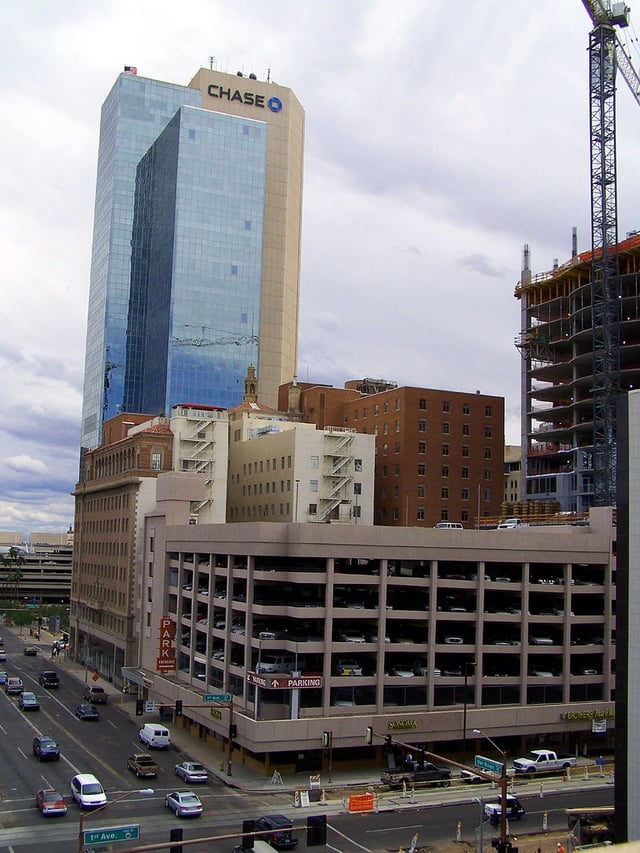
Chase's southwest regional headquarters in Phoenix, Arizona.
From September 1, 1799, to 1955, it was called The Bank of The Manhattan Company (New York); after a 1955 merger with the Chase National Bank (which existed separately from 1877 to 1954) it was called The Chase Manhattan Bank.[7]
The Manhattan Company
Chase traces its history back to the founding of The Manhattan Company by Aaron Burr on September 1, 1799, in a house at 40 Wall Street:[2]
After an epidemic of yellow fever in 1798, during which coffins had been sold by itinerant vendors on street corners, Aaron Burr established the Manhattan Company, with the ostensible aim of bringing clean water to the city from the Bronx River but in fact designed as a front for the creation of New York's second bank, rivaling Alexander Hamilton's Bank of New York.— The Economist[8]
In 2006, the modern-day Chase bought the retail banking division of the Bank of New York, which then only months later merged with Pittsburgh-based Mellon Financial to form the present-day BNY Mellon.
Chase National Bank
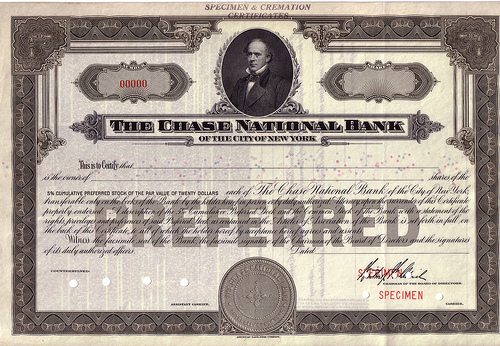
Specimen Stock Certificate
The Chase National Bank acquired a number of smaller banks in the 1920s, through its Chase Securities Corporation. In 1926, for instance, it acquired Mechanics and Metals National Bank.
However, its most significant acquisition was the Equitable Trust Company of New York in 1930, the largest stockholder of which was John D. Rockefeller, Jr.[9] This made Chase the largest bank in America and indeed, in the world.
Chase was primarily a wholesale bank, dealing with other prominent financial institutions and major corporate clients, such as General Electric, which had, through its RCA subsidiary, leased prominent space and become a crucial first tenant of Rockefeller Center, rescuing that major project in 1930. The bank is also closely associated with and has financed the oil industry, having longstanding connections with its board of directors to the successor companies of Standard Oil, especially ExxonMobil, which are also Rockefeller holdings.
Merger as Chase Manhattan Bank

The September 1, 1799-1877 logo

The 1877-1955 logo

The 1955–1961 logo

The 1961–1976 logo
In 1955, Chase National Bank and The Manhattan Company merged to create The Chase Manhattan Bank.[2] As Chase was a much larger bank, it was first intended that Chase acquire the "Bank of Manhattan", as it was nicknamed, but it transpired that Burr's original charter for the Manhattan Company had not only included the clause allowing it to start a bank with surplus funds, but another requiring unanimous consent of shareholders for the bank to be taken over. The deal was therefore structured as a merger by the Bank of the Manhattan Company of Chase National, with John J. McCloy becoming chairman of the merged entity. This avoided the need for unanimous consent by shareholders.
For Chase Manhattan Bank's new logo, Chermayeff & Geismar designed a stylized octagon in 1961, which remains part of the bank's logo today.[10] The Chase logo is a stylized representation of the primitive water pipes laid by the Manhattan Company, which were made by nailing together wooden planks.[11] The bank included an asset management business called the Chase Investors Management Corporation.
Under McCloy's successor, George Champion, the bank relinquished its antiquated 1799 state charter for a modern one. In 1969, under the leadership of David Rockefeller, the bank became part of a bank holding company, the Chase Manhattan Corporation.[3]
Mergers with Chemical, J.P. Morgan

The 1976–2005 logo
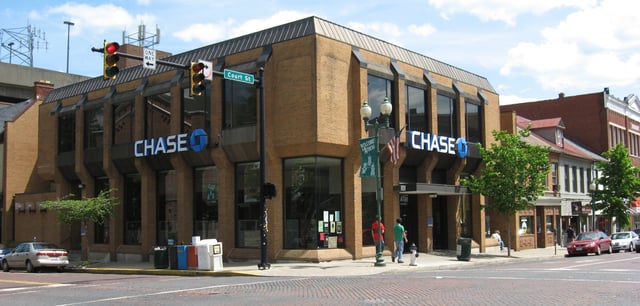
Chase branch located in Athens, Ohio

Chase bank in Chinatown, Manhattan
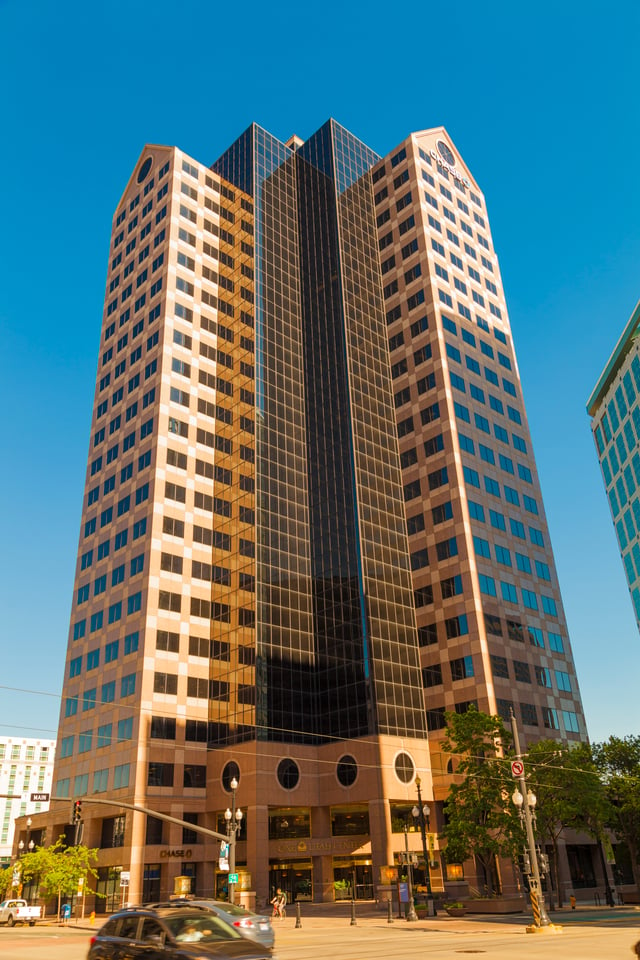
Chase offices and branch in One Utah Center tower in Salt Lake City
In August 1995, Chemical Bank of New York and Chase Manhattan Bank announced plans to merge.[12] The merger was completed in August 1996.[13] Chemical's previous acquisitions included Manufacturers Hanover Corporation, in 1991, and Texas Commerce Bank, in 1987. Although Chemical was the nominal survivor, the merged company retained the Chase name since it was better known (particularly outside the United States).
In December 2000, the combined Chase Manhattan completed the acquisition of J.P. Morgan & Co. in one of the largest banking mergers to date. The combined company was renamed JPMorgan Chase. In 2004, the bank acquired Bank One, making Chase the largest credit card issuer in the United States. JPMorgan Chase added Bear Stearns and Washington Mutual to its acquisitions in 2008 and 2009 respectively. After closing nearly 400 overlapping branches of the combined company, less than 10% of its total, Chase will have approximately 5,410 branches in 23 states as of the closing date of the acquisition.[14][15] According to data from SNL Financial (data as of June 30, 2008), this places Chase third behind Wells Fargo and Bank of America in terms of total U.S. retail bank branches. In October 2010, Chase was named in two lawsuits alleging manipulation of the silver market.[16] The suits allege that by managing giant positions in silver futures and options, the banks influenced the prices of silver on the New York Stock Exchange's Comex Exchange since early 2008.
The following is an illustration of the company's major mergers and acquisitions and historical predecessors to 1995 (this is not a comprehensive list):
Bank One Corporation
In 2004, JPMorgan Chase merged with Chicago-based Bank One Corp., bringing on board its current chairman and CEO Jamie Dimon as president and COO and designating him as CEO William B. Harrison, Jr.'s successor. Dimon's pay was pegged at 90% of Harrison's. Dimon quickly made his influence felt by embarking on a cost-cutting strategy and replaced former JPMorgan Chase executives in key positions with Bank One executives—many of whom were with Dimon at Citigroup. Dimon became CEO in January 2006 and Chairman in December 2006 after Harrison's resignation.[17]
Bank One Corporation was formed upon the 1998 merger between Banc One of Columbus, Ohio and First Chicago NBD. These two large banking companies were themselves created through the merger of many banks. JPMorgan Chase completed the acquisition of Bank One in Q3 2004. The merger between Bank One and JPMorgan Chase meant that corporate headquarters were now in New York City while the retail bank operations of Chase were consolidated in New York.[18]
The following is an illustration of Bank One's major mergers and acquisitions and historical predecessors (this is not a comprehensive list):
Washington Mutual
On September 25, 2008, JPMorgan Chase bought most banking operations of Washington Mutual from the receivership of the Federal Deposit Insurance Corporation (FDIC). That night, the Office of Thrift Supervision, in what was by far the largest bank failure in American history, seized Washington Mutual Bank and placed it into receivership. The FDIC sold the bank's assets, secured debt obligations and deposits to JPMorgan Chase Bank, NA for $1.888 billion, which re-opened the bank the following day. As a result of the takeover, Washington Mutual shareholders lost all their equity.[19] Through the acquisition, JPMorgan became owner of the former accounts of Providian Financial, a credit card issuer WaMu acquired in 2005. The company completed the rebranding of Washington Mutual branches to Chase in late 2009.
Other recent acquisitions
In the first-quarter of 2006, Chase purchased Collegiate Funding Services, a portfolio company of private equity firm Lightyear Capital, for $663 million. CFS was used as the foundation for the Chase Student Loans, previously known as Chase Education Finance.[20]
In April of that same year (2006), Chase acquired the Bank of New York Co.'s retail and small business banking network. This gave Chase access to 338 additional branches and 700,000 new customers in New York, New Jersey, Connecticut, and Indiana.
Controversies
Purchase of Nazi Germany's Reichsmarks during WWII
A press release from the National Archives and Records Administration (NARA) in 2004 announced that many of the new Federal Bureau of Investigation (FBI) files had become declassified. This declassification enabled the discovery that before and during the early years of World War II, the German government sold a special kind of Reichsmark, known as Rückwanderer [returnee] Marks, to American citizens of German descent. Chase National Bank, along with other businesses, were involved in these transactions. Through Chase, this allowed Nazi sympathizers to purchase Marks with dollars at a discounted rate. Specifically, "The financial houses understood that the German government paid the commissions (to its agents, including Chase) through the sale of discounted, blocked Marks that came mainly from Jews who had fled Germany." In other words, Nazi Germany was able to offer these Marks below face-value because they had been stolen from emigrés fleeing the Nazi regime. Between 1936 and 1941, the Nazis amassed over $20 million, and the businesses enabling these transactions earned $1.2 million in commissions. Of these commissions, over $500,000 went to Chase National Bank and its subagents.
These facts were discovered when the FBI began its investigation in October 1940. The purpose of the investigation was to follow German-Americans who had bought the Marks. However, Chase National Bank's executives were never federally prosecuted because Chase's lead attorney threatened to reveal FBI, Army, and Navy "sources and methods" in court (needs reference). Publicly naming the sources and methods could have posed security risks and threatened future intelligence gathering. To avoid such revelations, the executives' violations of the Johnson Act, the Espionage Act, and the Foreign Agents Registration Act were never prosecuted.[21][22][23]
Release of funds for Nazi Germany during WWII
Besides the controversial Rückwanderer Mark Scheme, NARA records also revealed another controversy during the occupation of France by the Nazis. From the late 1930s until June 14, 1941, when President Franklin D. Roosevelt (FDR) issued an Executive Order freezing German assets, Chase National Bank worked with the Nazi government. The order blocking any access to French accounts in the U.S. by anyone, but especially by the Nazis was issued by Secretary of the Treasury, Henry Morgenthau Jr., with the approval of FDR. Within hours of the order, Chase unblocked the accounts and the funds were transferred through South America to Nazi Germany.[23]
Refusal to release funds belonging to Jews in Occupied France
US Treasury officials wanted an investigation of French subsidiaries of American banks, such as Chase Bank, J.P. Morgan & Co, National City Corporation, Guaranty Bank, Bankers Trust, and American Express. Of these banks, only Chase and Morgan remained open in France during the Nazi occupation. The Chase branch chief in Paris, France, Carlos Niedermann, told his supervisor in New York that there had been an "expansion of deposits". Also, Niedermann was, "very vigorous in enforcing restrictions against Jewish property, even going so far as to refuse to release funds belonging to Jews in anticipation that a decree with retroactive provisions prohibiting such release might be published in the near future by the occupying Nazi authorities".
In 1998, Chase general counsel William McDavid said that Chase did not have control over Niedermann. Whether that claim was true or not, Chase Manhattan Bank acknowledged seizing about 100 accounts during the Vichy regime. Kenneth McCallion, an attorney, led a lawsuit against Barclays Bank for the illegal seizure of assets during WWII and has since turned his attention toward Chase. The World Jewish Congress (WJC), entered into discussions with Chase and a spokesperson for the WJC said, "Nobody at Chase today is guilty. They were not involved in whatever happened, but they do accept that they have an institutional responsibility." A Chase spokesman said, "This is a moral issue that we take very seriously." Chase general counsel McDavid added, "that Chase intends to compensate Jewish account holders whose assets were illegally plundered". In 1999, the French government formed a commission to report findings to Prime Minister Lionel Jospin. Claire Andrieu, a commission member and history professor at the Sorbonne, said that under the Vichy regime, French banks received visits from Nazi officials but U.S. banks did not. At that time, they did not have to report Jewish accounts, but they did just as the French banks did. She goes on to say that an American ambassador protected the U.S. subsidiaries.[24][25][26][27]
Recent controversies
JPMorgan Chase has paid $16 billion in fines, settlements and other litigation expenses from 2011 to 2013. Of the $16 billion JPMorgan Chase has paid, about $8.5 billion were for fines and settlements resulting from illegal actions taken by bank executives, according to Richard Eskow at the Campaign for America's Future, who cited a new report from Joshua Rosner of Graham Fisher & Co.
The $16 billion total does not include a recent settlement that calls for JPMorgan Chase to pay $100 million to waive $417 million in claims it had made against clients of the firm MF Global.
The U.S. Treasury's Office of Foreign Assets Control found that JPMorgan had illegally aided dictatorships in Cuba, Sudan, Liberia and Iran, including transferring 32,000 ounces of gold bullion (valued at approximately $20,560,000) to the benefit of a bank in Iran. JPMorgan did not voluntarily self-disclose the Iranian matter to OFAC.[28]
Misled investors
Engaged in fictitious trades
Collected illegal flood insurance commissions
Wrongfully foreclosed on soldiers; charged veterans hidden fees for refinancing
Violated the Federal Trade Commission Act by making false statements to people seeking automobile loans
Illegally increased their collection of overdraft fees by processing large transactions before smaller ones
Helped drive Jefferson County, Alabama, into bankruptcy by switching its fixed-rate debt to variable
Violated antitrust provision of the Sherman Act relating to bid rigging
Targeted account closures
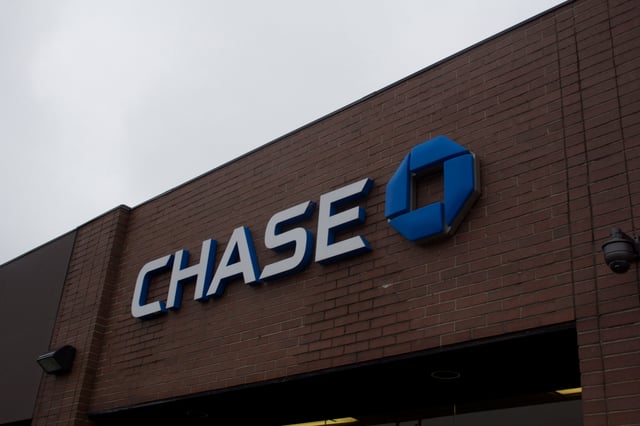
Chase Bank in Rye, New York
During 2013 and 2014, Chase and other banks received media attention for the practice of canceling the personal and business accounts of hundreds of legal sex workers, citing in some instances the "morality clause" of their account agreement.[34][35] Later it was discovered that this practice included mortgage accounts and business loans.[36] Chase canceled the mortgage refinancing process for one individual, that the bank had initiated, whose production company made soft core films like those broadcast on Cinemax.[37] This resulted in a lawsuit[38] which cited evasive dealings and misleading statements by several Chase executives including Securities Vice President Adam Gelcich, Legal Fair Lending Department Vice President Deb Vincent, and an unnamed executive director and assistant general counsel.[39]
In addition to closing accounts for sex workers, the bank has also been using its "morality clause" to disassociate from other types of businesses.[40] Some of these other businesses include medical marijuana dispensaries and any that are "gun related".[40] Another was a woman-owned condom manufacturing company called Lovability Condoms. Company founder Tiffany Gaines was rejected by Chase Paymentech services "as processing sales for adult-oriented products is a prohibited vertical" and was told that it was a "reputational risk" to process payment for condoms.[40] Gaines then started a petition to ask Chase to review and change its policy of classifying condoms as an "adult oriented product". The bank later reversed its decision and invited Gaines to submit an application citing that was already doing business with a "wide variety of merchants, including grocers and drug stores, that sell similar products".[41]
In 2019 the bank faced growing criticism for its alleged practice of arbitrarily targeting the personal accounts of outspoken online personalities such as Martina Markota and Proud Boys chairman Enrique Tarrio. Although the specific motives behind the closures were not officially disclosed the assumption among many on the right was that they were political in nature.[42]
Dakota Access Pipeline
Financial documents[43] from Energy Transfer Partners, the pipeline builder for the Dakota Access Pipeline, lists a number of large banking institutions that have provided credit for the project, including JP Morgan Chase. Because of these financial ties, Chase and other banks have been a target[44] of the Dakota Access Pipeline protests during 2016 and 2017.
Parental leave policy
JPMorgan Chase agreed to pay $5 million to compensate their male employees who did not receive the same paid parental leave as women from 2011 to 2017.[45] In December 2017, the bank "clarified its policy to ensure equal access to men and women looking to be their new child's main caregiver".[46] According to the involved attorneys, this is the biggest recorded settlement in a U.S. parental leave discrimination case. JPMorgan agreed to train and monitor to ensure equal parental leave benefits and stated that "its policy was always intended to be gender-neutral".[47]